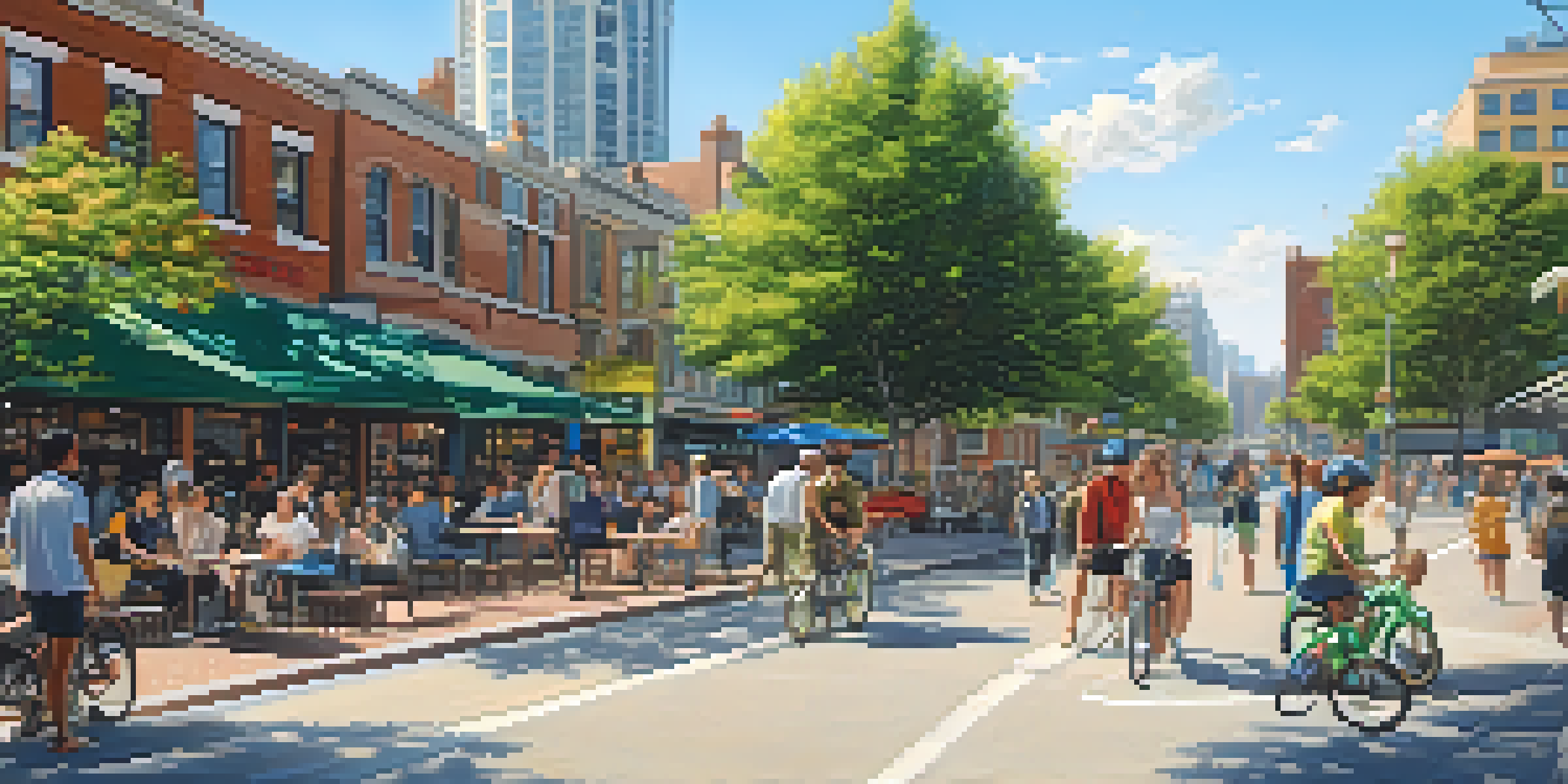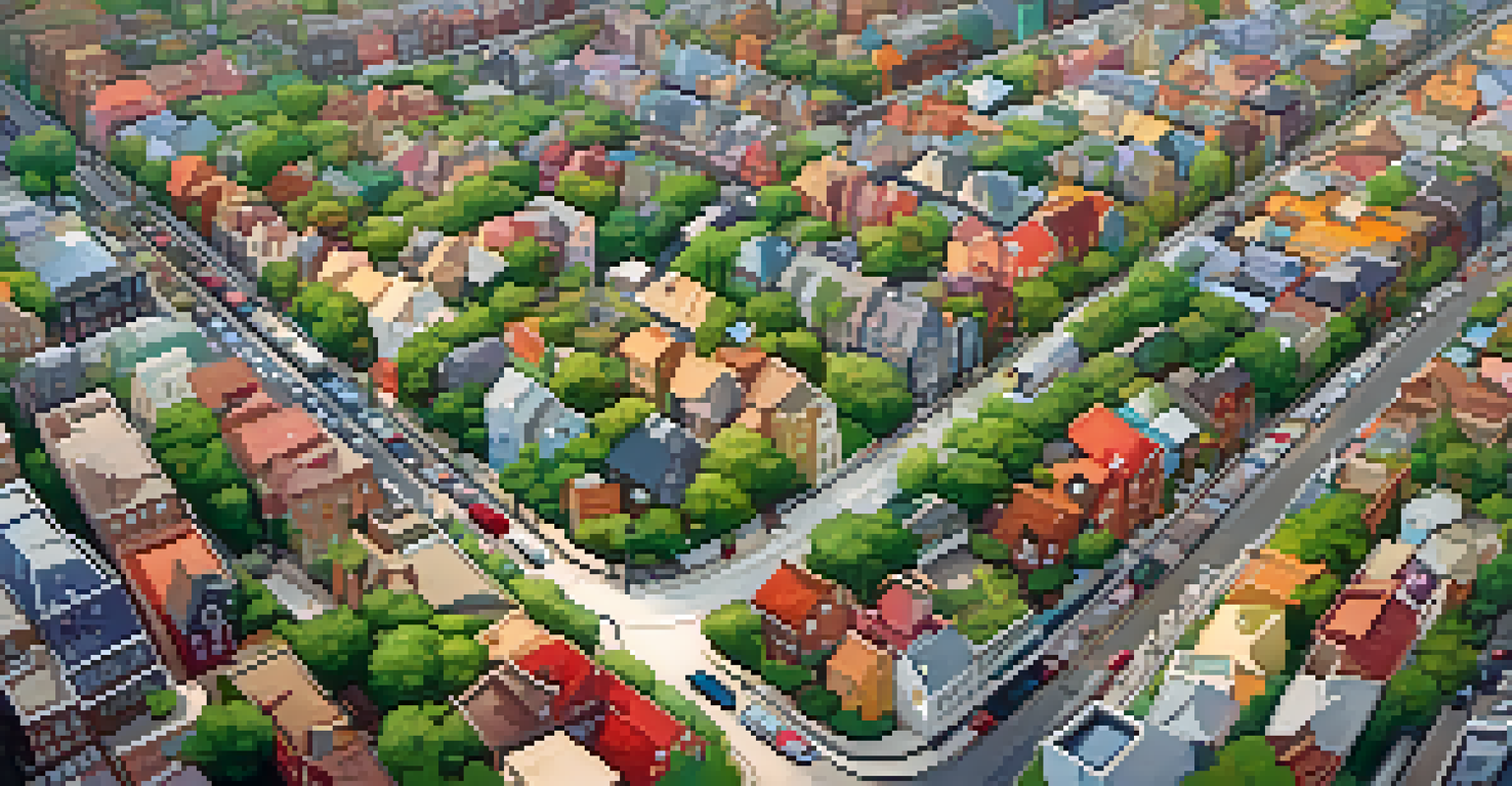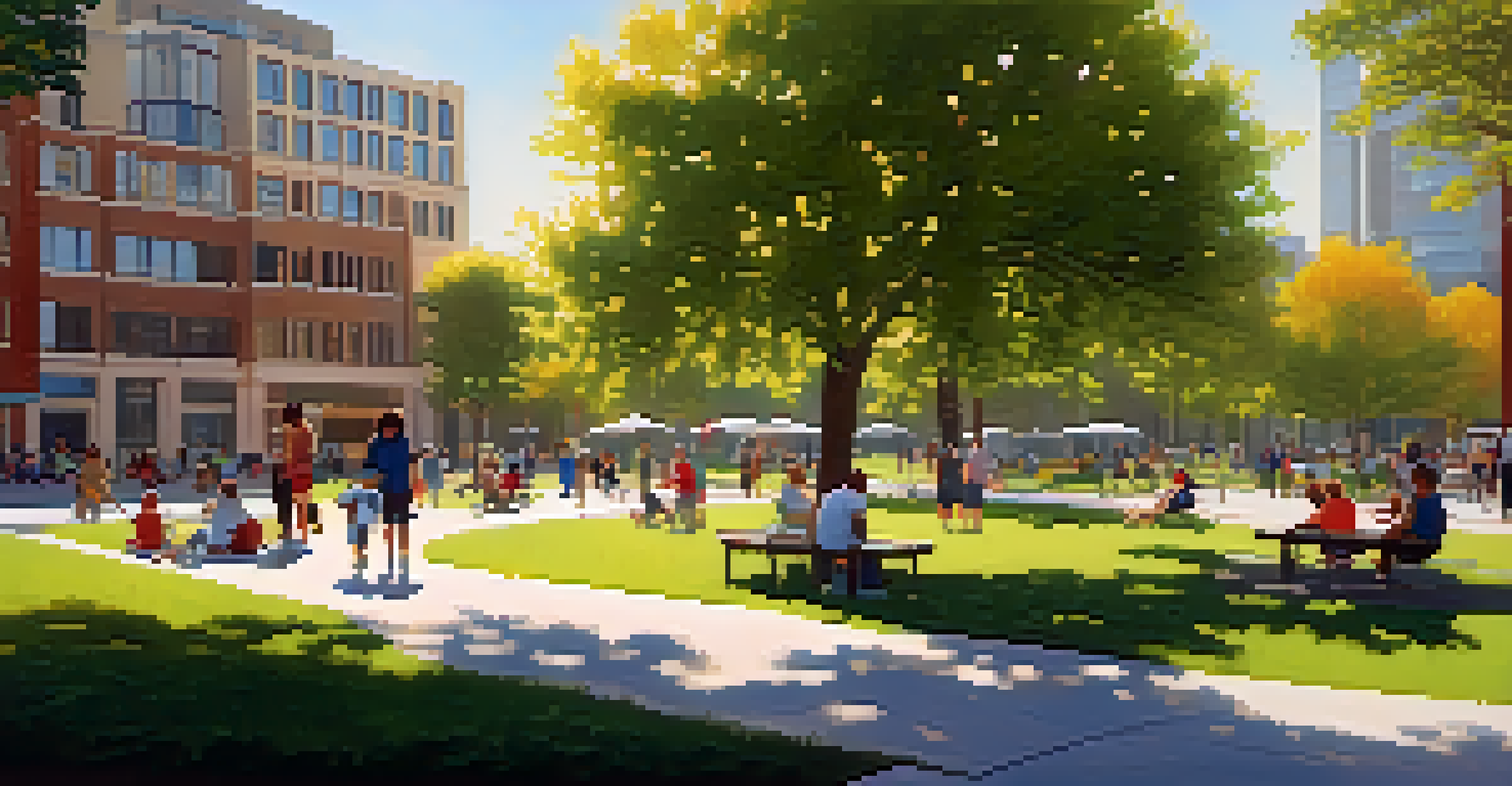How Zoning Impacts Infrastructure Development

What is Zoning and Its Purpose in Urban Planning?
Zoning refers to the legal framework that dictates how land can be used in different areas of a city or town. It helps ensure that land is developed in an organized manner, balancing residential, commercial, and industrial needs. By establishing guidelines for land use, zoning aims to promote public health, safety, and welfare, while also enhancing the community's aesthetic appeal.
Zoning is not just about property lines; it’s about the quality of life in our communities.
For example, zoning prevents heavy industries from being located next to schools or parks, thereby protecting residents from noise and pollution. It creates designated areas for housing, businesses, and public facilities, making sure that each land use complements the others. This organized approach to land management ultimately supports the infrastructure that communities rely on.
In essence, zoning serves as a blueprint for city development, guiding planners and developers in creating spaces that work harmoniously together. It can also influence property values, as areas designated for commercial use often attract more investment than purely residential zones.
How Zoning Influences Infrastructure Investment Decisions
Zoning regulations can significantly impact where and how infrastructure investments are made. For example, if a city designates an area for commercial development, infrastructure such as roads, utilities, and public transport will likely be prioritized in that region. This strategic planning ensures that essential services are readily available, making the area more attractive to businesses and residents alike.

Conversely, if an area is zoned primarily for residential use, infrastructure developments may focus on schools, parks, and other community services. This zoning distinction directly influences the type of facilities that receive funding and attention from local governments and investors. Thus, effective zoning can lead to more efficient allocation of resources, benefiting the local economy.
Zoning Guides Urban Development
Zoning establishes legal frameworks that organize land use, balancing residential, commercial, and industrial needs to promote community welfare.
Moreover, zoning can also dictate the scale of infrastructure projects. For instance, a zoning change that allows for higher density housing can lead to the need for expanded public transportation or additional road networks to accommodate the increased population. This interconnected relationship between zoning and infrastructure is crucial for sustainable urban growth.
The Impact of Zoning on Transportation Infrastructure
Transportation infrastructure is deeply influenced by zoning laws, shaping how cities connect and function. Zoning can determine where roads, highways, and public transit systems are developed, affecting accessibility for residents and businesses. For instance, areas zoned for high-density residential use often require enhanced public transportation options, such as bus routes or rail lines, to support the influx of people.
Good zoning should create a balance between the needs of the community and the environment.
When zoning regulations promote mixed-use developments, they can reduce reliance on cars by placing homes, shops, and services within walking distance. This not only eases traffic congestion but also encourages healthier lifestyles by promoting walking and cycling. As a result, cities that effectively integrate zoning with transportation planning can create more livable environments.
Additionally, zoning can also play a role in funding decisions for transportation projects. Areas identified for growth may receive priority for infrastructure improvements, attracting further investment and development. This synergy between zoning and transportation is vital for creating connected and efficient urban spaces.
Zoning's Role in Environmental Sustainability
Zoning can significantly contribute to environmental sustainability by guiding development away from ecologically sensitive areas. By establishing zones that protect wetlands, forests, and other natural resources, communities can maintain biodiversity and reduce the risk of environmental degradation. Such zoning practices are essential as urban areas continue to expand.
Moreover, zoning can encourage the development of green spaces and parks, which are vital for promoting ecological health and community well-being. Areas designated for recreational use not only enhance the quality of life for residents but also provide critical habitats for wildlife. This balance between urban growth and environmental preservation is key to sustainable development.
Zoning Affects Infrastructure Funding
Zoning regulations directly influence where infrastructure investments are made, prioritizing areas designated for specific uses like commercial or residential.
Furthermore, zoning can promote sustainable building practices by requiring developers to use eco-friendly materials and technologies. This proactive approach not only reduces a community's carbon footprint but also sets a standard for future developments. In this way, zoning serves as a powerful tool for fostering sustainable infrastructure.
Challenges and Controversies Surrounding Zoning Laws
While zoning serves many beneficial purposes, it also comes with challenges and controversies. One significant issue is that zoning can sometimes lead to inequitable development outcomes. For instance, zoning laws that favor affluent neighborhoods may restrict affordable housing options in those areas, exacerbating social inequalities.
Additionally, the process of changing zoning regulations can be contentious, often involving lengthy debates and community pushback. Residents may resist changes that they believe could alter the character of their neighborhoods, leading to conflicts between developers and community members. This tension can slow down necessary infrastructure improvements and hinder urban growth.
It's essential for city planners and lawmakers to engage with the community in the zoning process. By considering diverse perspectives and needs, cities can create more inclusive zoning policies that promote equitable development and infrastructure growth. Finding this balance is crucial for fostering harmonious communities.
The Future of Zoning and Infrastructure Development
As cities evolve, so too do the challenges and opportunities associated with zoning and infrastructure development. Trends such as remote work and urbanization are prompting a reevaluation of traditional zoning practices. For example, the rise of mixed-use developments that combine residential, commercial, and recreational spaces may reshape how cities plan for infrastructure.
Moreover, advancements in technology are also influencing zoning decisions. The integration of smart technologies in urban planning can lead to more efficient infrastructure systems, such as traffic management and energy distribution. This shift toward smart city initiatives highlights the need for zoning regulations to adapt and accommodate new innovations.
Zoning Promotes Environmental Health
Through zoning, communities can protect ecologically sensitive areas and encourage the development of green spaces, fostering environmental sustainability.
Ultimately, the future of zoning will require a collaborative approach that includes input from various stakeholders, including residents, businesses, and urban planners. By fostering innovation and flexibility in zoning laws, cities can create infrastructures that are not only sustainable but also resilient in the face of changing needs and circumstances.
Conclusion: The Interconnectedness of Zoning and Infrastructure
In summary, zoning plays a pivotal role in shaping infrastructure development in urban areas. By establishing guidelines for land use, zoning influences where and how infrastructure investments are made, impacting transportation, environmental sustainability, and community well-being. Understanding this relationship is crucial for effective urban planning.
As cities continue to grow and evolve, the need for thoughtful zoning practices becomes even more critical. Engaging with communities and adapting to emerging trends will help ensure that zoning regulations support equitable and sustainable infrastructure development. This interconnectedness ultimately fosters vibrant, resilient cities.

By recognizing the profound impact of zoning on infrastructure, we can better navigate the complexities of urban development. A collaborative approach that prioritizes community needs and environmental considerations will pave the way for healthier, more sustainable cities in the future.